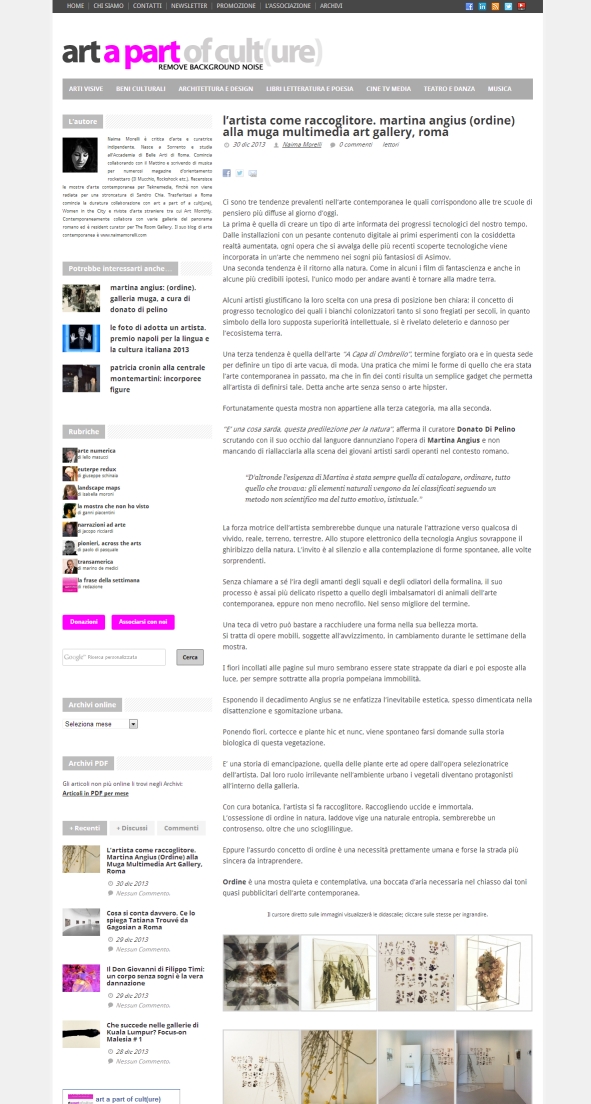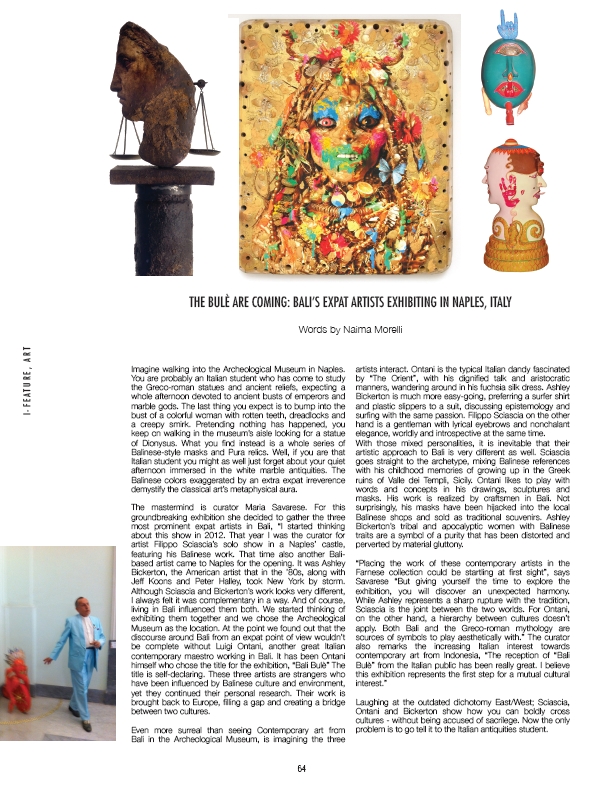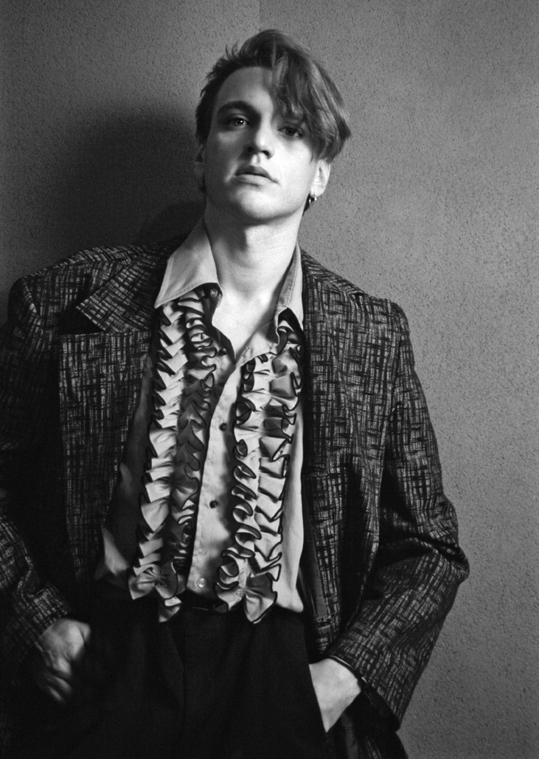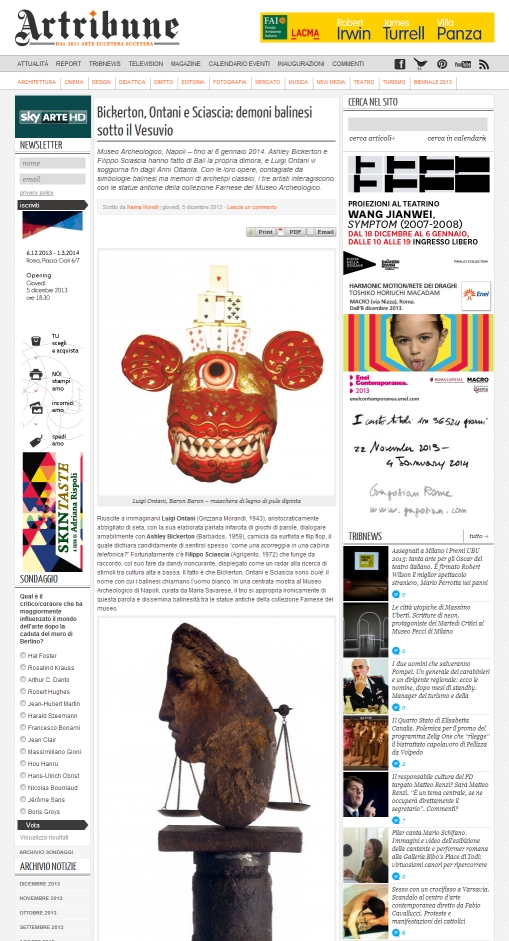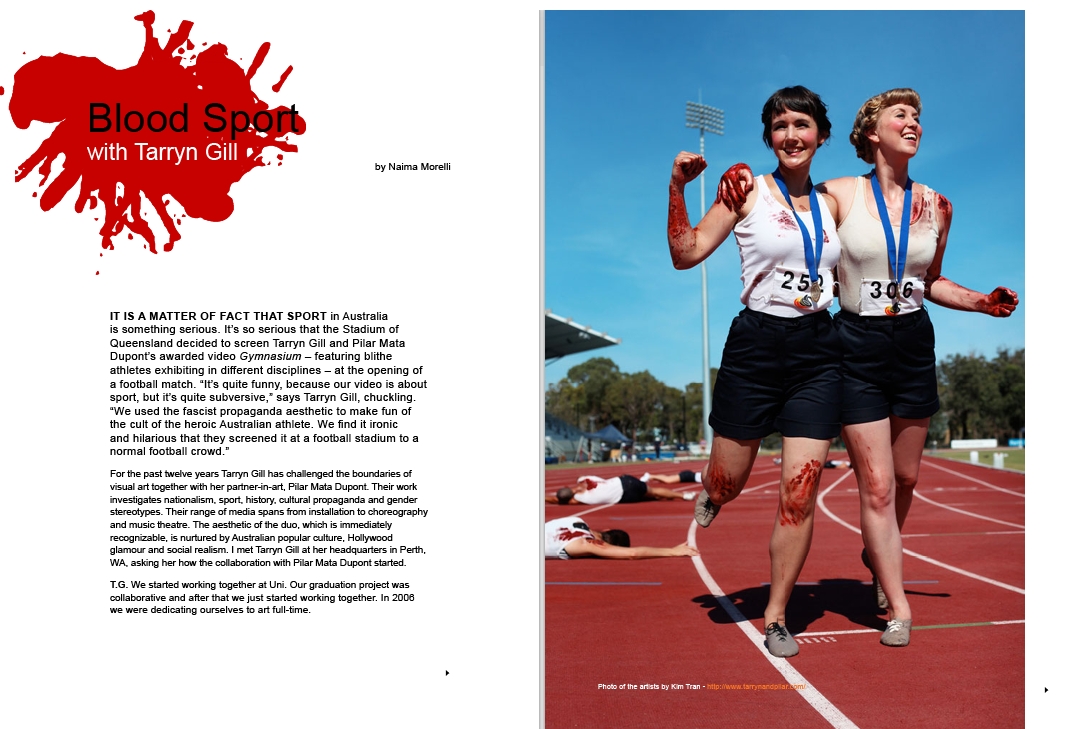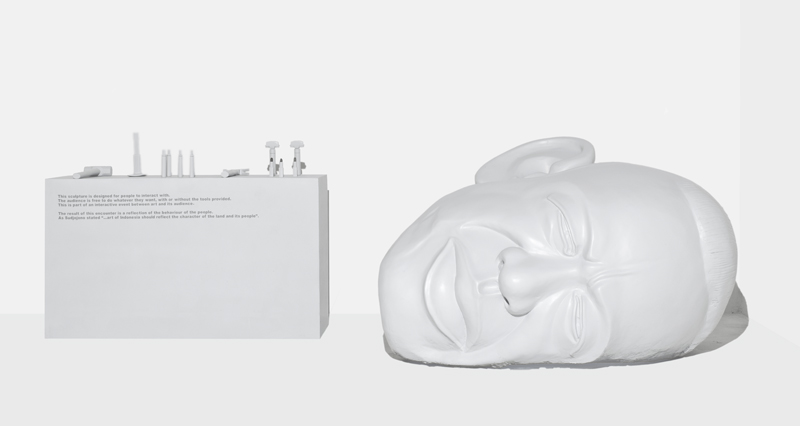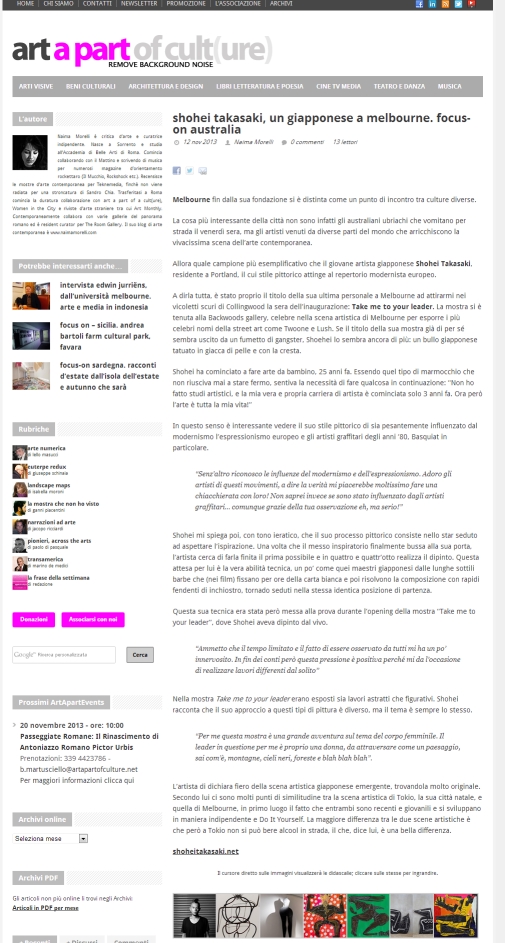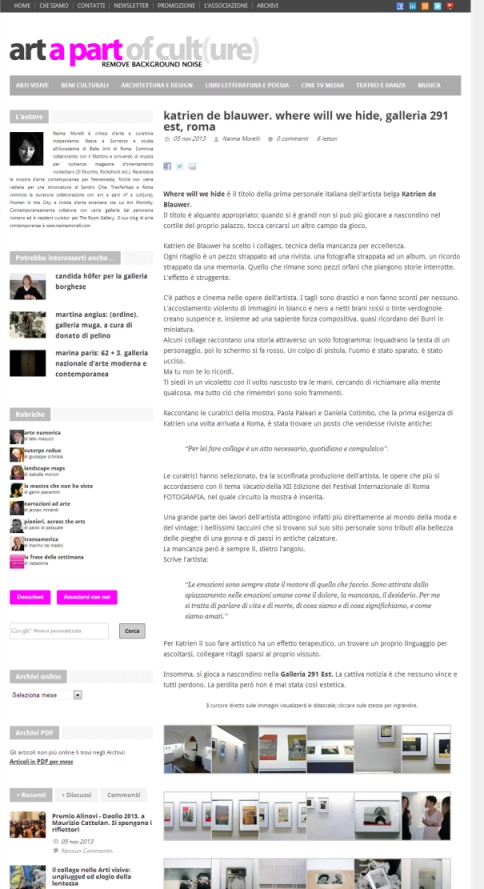
C’era insomma un tempo dove il garage non era più quel luogo dove parcheggiavi la macchina e stipavi il televisore rotto.
C’era un tempo dove tutto era spartano e vivido. Basico. Come dire, un garage, un gallerista e la centralità dell’arte.
Grossomodo è così che l’arte moderna in Italia si è incamminata verso la contemporaneità.
Erano tempi mitici, dove le gallerie venivano allagate o nelle quali passeggiavano cavalli.
L’unico problema a quei tempi, piuttosto marginale per l’arte contemporanea, era dove parcheggiare l’automobile.
Adesso probabilmente la gente prende meno multe per divieto di sosta, ma quell’atmosfera grunge e sincera sembra essere sparita. Diversamente da altre città europee, a Roma e a Milano le alternative alle immacolate stanze dell’arte contemporanea sono veramente poche.
“L’arte contemporanea italiana è diventata sempre più istituzionalizzata. Non c’è traccia delle esperienze d’avanguardia degli anni sessanta e settanta. Sono sorpreso in particolare dagli artisti più giovani. Sono infatti proprio loro i primi a cercare di entrare in un sistema dell’arte già bello e pronto, e nemmeno si sforzano di immaginare soluzioni alternative. La stessa pratica artistica sembra essere diventata una faccenda secondaria”, afferma l’artista Alessandro Cannistrà.
